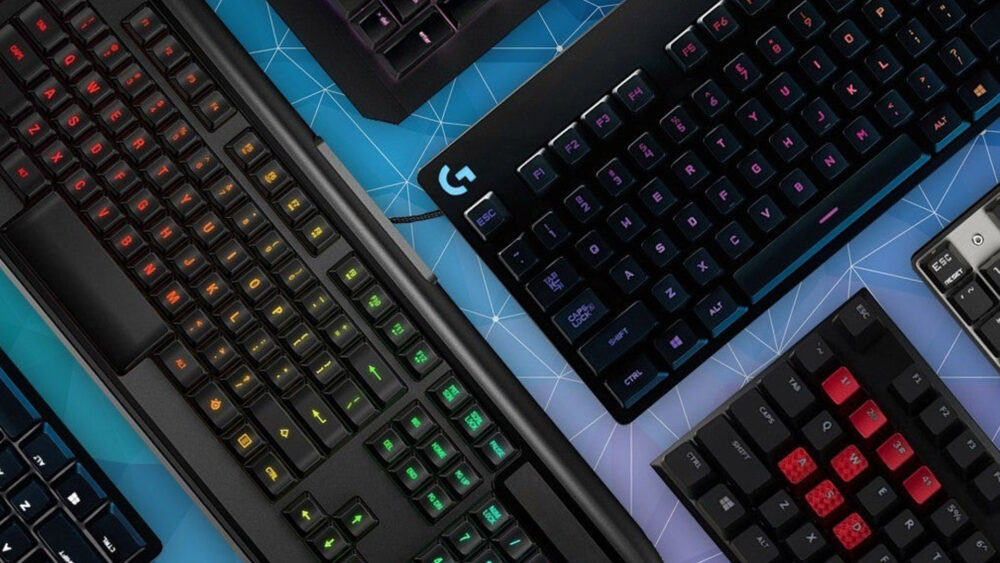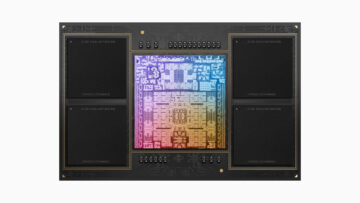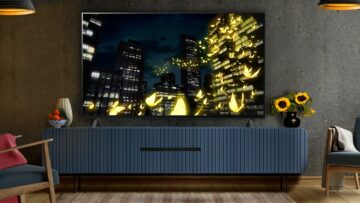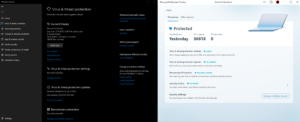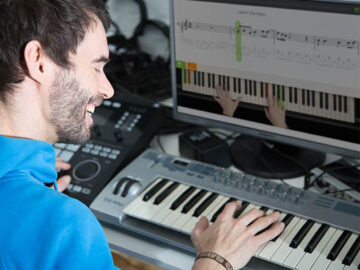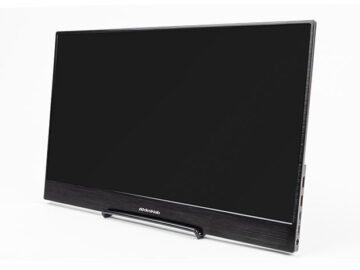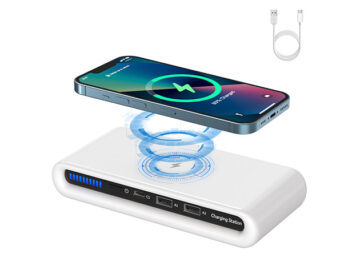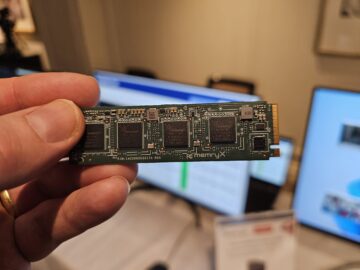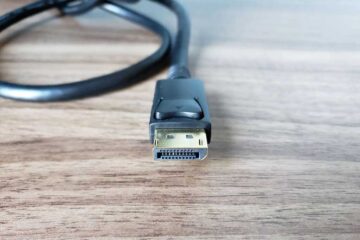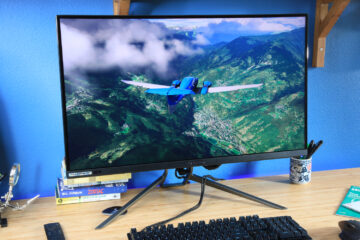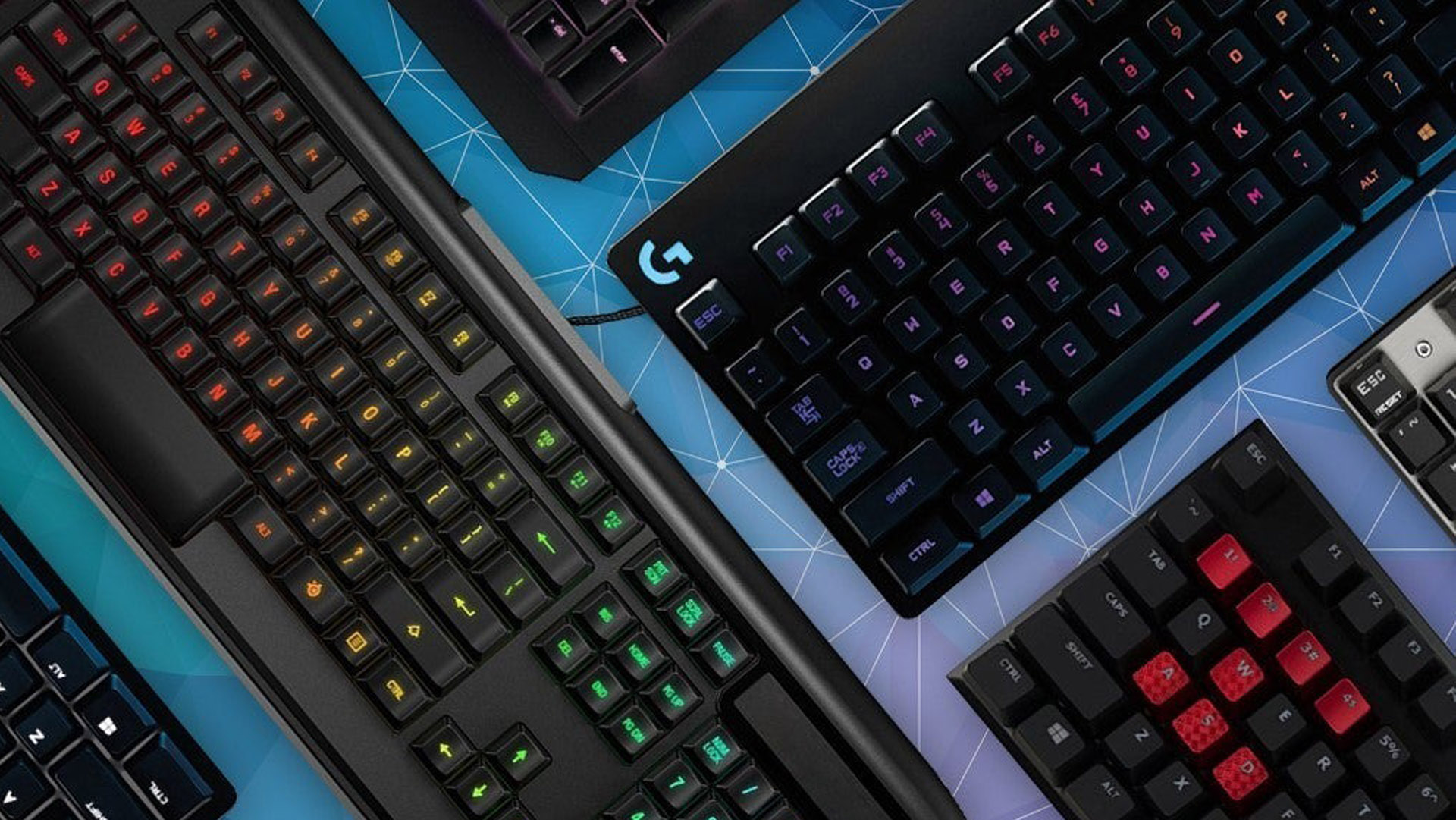
It’s safe to say that PC fans are living in the golden age of keyboards. Since mechanical designs came back into fashion we’re awash in an incredible variety of styles, capabilities, customization options, and price points. And naturally, Amazon’s smorgasbord of deals on Prime Day will have more than a few of them available at steep discounts.
Amazon’s second multi-day sales extravaganza of the year isn’t yielding the same kind of discounts as the first. Even so, there are some particularly deep discounts on gaming models, so now’s a good time to buy if you’ve been waiting for a deal or you’re hunting for gifts. You should also check out our overall top picks for mechanical keyboards and PC gaming keyboards.
Best Prime Day deals on mechanical keyboards
- Havit KB487L, compact design with num pad and PBT keycaps, $34.99 (30% off at Amazon)
- RK Royal Kludge M75, Bluetooth/2.3GH wireless, gasket mount, radial dial, 75% layout, OLED display, hot-swap, $79.99 (43% off at Amazon)
- DROP CTRL keyboard, tenkeyless RGB with hot-swap sockets and metal frame, $209.00 (30% off at Amazon)
- Logitech POP Keys, 75% layout, Bluetooth, colorful circular keycaps, programmable emoji keys, $69.99 (30% off at Amazon)
- DROP ALT keyboard, high-profile metal case, 65% layout, hot-swap switches, PBT keycaps, programmable, RGB lighting, $194.99 (28% off at Amazon)
- Logitech MX Mechanical Mini, low-profile 75%, quiet switches, 2.4GHz and Bluetooth wireless, $129.99 (14% off at Amazon)
- Keychron C3 Pro, TKL layout, red LEDs, QMK and VIA programming, red or brown switches, $27.99 (39% off at Amazon)
For pure typists, the high-priced Drop keyboards in various sizes are a good deal, filled with high-quality components and ready to be customized. But if that’s too rich for your blood, the Royal Kludge M75 is probably the best deal of the lot. It offers a generous discount on a board packed with features, including dual wireless and hot-swap customizability. Logitech’s offerings are solid, though we’ve seen these discounts before, and Keychron might have the best deal on any mechanical board for this sale.
Best Prime Day deals on gaming keyboards
- Asus ROG Falchion Ace, 65% travel board, dual USB, touch volume controls, protective case, speedy lubed switches, $89.99 (25% off at Amazon)
- Redragon K556, full-sized budget gaming keyboard with hotswap switches and RGB, $47.38 ($40% off at Amazon)
- HyperX Alloy Origins 60, 60% travel board, tactile switches, RGB lighting, PBT keycaps, $59.99 (40% off at Amazon)
- SteelSeries Apex 7, full-sized, linear quiet switches, radial dial, OLED display, wrist rest, $92.99 (40% off at Amazon)
- SteelSeries Apex Pro Mini Wireless, 60% adjustable magnetic switches, Bluetooth and USB-C dongle, $159.79 (33% off at Amazon)
- Razer Huntsman V2 Analog, full-sized, adjustable optical switches, wrist rest, media controls and dial, $154.99 (38% off at Amazon)
- Corsair K70 Pro, full-sized, optical switches, media controls with dial, wrist rest, 8000Hz polling, $129.99 (28% off at Amazon)
Razer probably takes the win from this lot of gaming keyboards, with nearly $100 off its top-of-the-line Huntsman with adjustable analog switches. But there are some great deals to be had from Asus, HyperX, and SteelSeries if you’re looking for something small and portable. Those who want the absolute best deal should check out Redragon, with a hot-swap, customizable board (oddly rare for gaming designs) that’s cheaper than even an entry model from more high-end brands.
Best Prime Day deals on other keyboards
- Logitech MX Keys, full-sized backlit board with soft-touch keys, triple-device 2.4GHz wireless and Bluetooth, $104.99 (12% off at Amazon)
- MSI Vigor GK30 and GM11 gaming mouse combo, membrane board with free wired mouse, $27.99 (44% off at Amazon)
- Logitech MK270 keyboard and mouse combo, full-sized wireless board and basic wireless mouse with USB dongle, $19.99 (28% off at Amazon)
- Amazon Basics Wireless Full Size Computer Mouse and Keyboard Combo, basic functionality with added browser controls, $34.99 (12% off at Amazon)
- Logitech Mk825 wireless keyboard and mouse combo, multi-device Bluetooth support, $49.99 (38% off at Amazon)
- Annker Bluetooth tablet keyboard, $8.99 (32% off at Amazon)
If mechanical boards of any kind just aren’t your thing, then Logitech’s MX Keys is about as good as it gets, even if its discount is a bit lacking. For the absolute deal-hunters out there, a basic wireless mouse and keyboard from Logitech for 20 bucks can’t be beaten. If you’re gaming on a budget, you can get a similar deal (sans wireless, but you didn’t want that anyway, gamer) with an MSI keyboard and mouse bundle for just a few bucks more.
FAQ
What kind of keyboard should I buy?
That depends on what you’re doing with it. If you have a laptop and you like typing on it, you’re good to go. But if you have a desktop, or you just don’t feel good typing for long periods of time on the keyboard you’re using now, it might be time for an upgrade. Most of the high-quality keyboards on the market are mechanical now, with big, chunky builds and long, loud key presses, because that seems to be what people prefer. But there are still slim, quiet boards available from companies like Logitech, Microsoft, and Apple.
What kind of mechanical switch do I need?
Again, that comes down to what you want to do with it. There are broadly three kinds of switch: Linear (smooth from the top of the key press to the bottom), tactile (a small “bump” where the key press registers), and clicky (a loud “click” where the key press registers). These are generically color-coded to Red, Brown, and Blue switches, respectively, though that’s not universal — if you want to be sure, look for the linear, tactile, or clicky terms.
It’s all a matter of individual taste, but gamers tend to prefer linear switches, because they can be pressed and released quickly. Those who type for long stretches of time like tactile switches thanks to their finger feedback. And if you want even more feedback, along with a bit of noise, go witch a clicky switch. Just be aware that the noise might not be so well-received by other people in your home or office!
If you want to experiment with different kinds of switches without needing to buy multiple keyboards, get a board with hot-swap sockets. These let you pull out the switches and replace them with a different type. You can even mix and match the switches you put on a single board, if you have enough of them — Reds for WASD and Browns for the rest, for example.
What layout keyboard should I get?
Keyboards come in a shocking variety of layouts these days, from full-sized (with the number pad on the left) to 60%, which is just the main alphanumeric section between the two CTRL keys with the Function row cut off. Tenkeyless, or TKL, is a good middle ground that doesn’t shrink any keys but chops off the number pad, and 75% preserves the function row and arrow cluster by shrinking a few of the less-used keys.
60% is great for travel keyboards, or those who don’t have a lot of space. Full-size is almost a must if you do a lot of data entry, and rely on rapidly inputting long strings of numbers. Everything else is a balancing act between space and comfort. But keep in mind, the smaller you go, the more often you’ll need to use a function key modifier — a standard 60% keyboard doesn’t have arrows or a Delete key on the main later, for example. Smaller boards include a learning curve if you’re not used to them.
Should I get a wireless keyboard?
That depends on what’s important to you. If your keyboard sits in front of your desk and never moves, it’s probably not important. But if your keyboard is constantly on the go with you in a bag, or needs to connect to multiple devices over Bluetooth, wireless is the way to go. The latest boards can connect to three or four computers (or phones or tablets) easily, and last for months and months on a charge…as long as you take it easy with the backlighting.
There’s one exception: gaming. If you’re playing PC games with your keyboard, you want to use a wireless connection with low latency, and that means a dongle you plug in. Unlike some older wireless keyboards, and just like newer kinds of mice, modern wireless gaming boards have almost zero latency. That means you’ll never notice a gap between when you press a button and when your character reacts on screen. Just don’t use Bluetooth (even if it’s an option), as the high latency and crowded wireless bands can cause performance issues.
Do I need a gaming keyboard?
Most of the time, no, you don’t. You can play PC games on pretty much any keyboard. Gaming keyboards offer a few nice perks, though, including fast polling rates (so even less lag time between key press and on-screen action) and custom programming tools. They also tend to be flashier, with rainbow lights and exotic case materials…not that any of that will really make a difference to how you play.
Again, if you want a wireless keyboard that’s also good for gaming, look for a gaming-specific model that uses a dedicated wireless dongle and not Bluetooth.
- SEO Powered Content & PR Distribution. Get Amplified Today.
- PlatoData.Network Vertical Generative Ai. Empower Yourself. Access Here.
- PlatoAiStream. Web3 Intelligence. Knowledge Amplified. Access Here.
- PlatoESG. Carbon, CleanTech, Energy, Environment, Solar, Waste Management. Access Here.
- PlatoHealth. Biotech and Clinical Trials Intelligence. Access Here.
- Source: https://www.pcworld.com/article/1984400/october-prime-day-keyboard-deals.html
- 20
- 24
- 25
- 39
- 40
- a
- About
- Absolute
- act
- Action
- added
- age
- All
- almost
- along
- also
- Amazon
- an
- and
- any
- apex
- Apple
- ARE
- Arrow
- as
- Asus
- At
- available
- aware
- back
- balancing
- basic
- Basics
- BE
- because
- been
- before
- BEST
- between
- BIG
- Bit
- blood
- Blue
- bluetooth
- board
- Boards
- bottom
- brands
- broadly
- brown
- browns
- browser
- budget
- builds
- Bundle
- but
- button
- buy
- by
- came
- CAN
- capabilities
- case
- Cause
- character
- check
- chunky
- colorful
- come
- comes
- comfort
- compact
- Companies
- components
- computer
- computers
- connect
- connection
- constantly
- controls
- crowded
- CTRL
- curve
- custom
- customizable
- customization
- customized
- Cut
- data
- day
- days
- deal
- Deals
- dedicated
- deep
- depends
- Design
- designs
- desk
- desktop
- Devices
- difference
- different
- Discount
- discounts
- display
- do
- doing
- down
- Drop
- easily
- easy
- else
- Emoji
- enough
- entry
- even
- everything
- Example
- exception
- exotic
- experiment
- extravaganza
- fans
- FAQ
- Fashion
- FAST
- Features
- feedback
- feel
- few
- filled
- finger
- First
- For
- four
- Frame
- Free
- from
- front
- full
- function
- functionality
- gamer
- Gamers
- Games
- Gaming
- gap
- generous
- Get
- gifts
- go
- golden
- good
- great
- Ground
- had
- Have
- High
- High-End
- high-profile
- High-Quality
- Home
- How
- HTML
- HTTPS
- HyperX
- i
- if
- important
- in
- include
- Including
- incredible
- individual
- into
- Is
- issues
- IT
- ITS
- jpg
- just
- keep
- Key
- Keyboard
- keys
- kind
- laptop
- last
- latency
- later
- latest
- layout
- learning
- left
- less
- let
- Lighting
- like
- living
- Logitech
- Long
- Look
- looking
- lot
- LOUD
- Low
- main
- make
- Market
- Match
- matter
- means
- Media
- metal
- mice
- Microsoft
- Middle
- might
- mind
- mix
- model
- models
- Modern
- months
- more
- most
- mount
- MSI
- much
- multiple
- must
- nearly
- need
- needs
- never
- Nice
- no
- Noise
- not
- notice
- now
- number
- numbers
- October
- of
- off
- offer
- Offerings
- Offers
- often
- older
- Oled
- on
- One
- Option
- Options
- or
- origins
- Other
- our
- out
- over
- overall
- Packed
- particularly
- PC
- pc games
- People
- performance
- periods
- perks
- phones
- plato
- plato data intelligence
- platodata
- platogaming
- play
- Playing
- plug
- Points
- pop
- portable
- prefer
- press
- pretty
- price
- prime
- Pro
- probably
- programmable
- Programming
- Protective
- put
- quickly
- rapidly
- Rare
- Rates
- Ready
- really
- red
- Reds
- released
- rely
- replace
- REST
- rich
- ROG
- royal
- safe
- sale
- sales
- same
- say
- Screen
- second
- section
- seems
- seen
- should
- similar
- since
- single
- sits
- Size
- sizes
- small
- smaller
- smooth
- So
- solid
- some
- something
- Space
- standard
- SteelSeries
- still
- Styles
- support
- sure
- Switch
- Tablet
- Take
- takes
- taste
- terms
- than
- thanks
- that
- The
- their
- Them
- then
- there
- These
- they
- thing
- this
- those
- though
- three
- time
- to
- too
- tools
- top
- touch
- travel
- two
- type
- Universal
- unlike
- upgrade
- usb
- USB-C
- use
- used
- uses
- using
- variety
- various
- via
- volume
- waiting
- want
- way
- What
- when
- where
- WHO
- will
- win
- wireless
- with
- without
- year
- yielding
- you
- your
- zephyrnet
- zero
